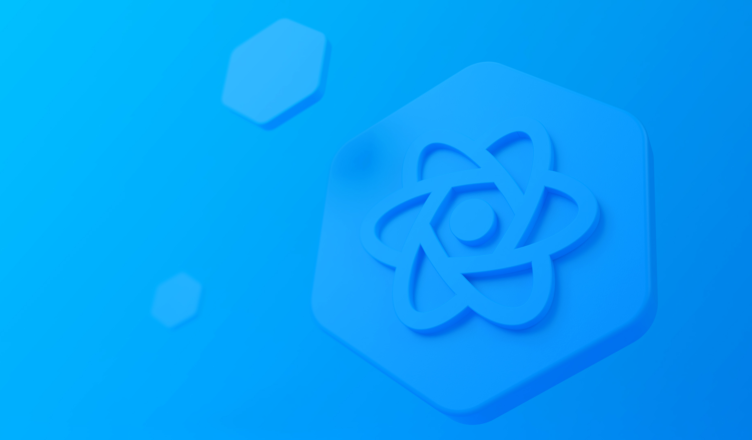Introduction
Reactstrap is a library that seamlessly integrates Bootstrap 4 components into React applications. By offering a collection of pre-built React components that mirror Bootstrap’s design and functionality, Reactstrap enables developers to easily create responsive and visually appealing web interfaces. This integration eliminates the need to manually manage Bootstrap’s JavaScript components, allowing developers to focus more on building robust React applications while leveraging the styling and layout capabilities of Bootstrap. Numerous training institutes help you Learn React Online with the help of expert mentors. Whether you’re new to React or an experienced developer, Reactstrap provides a straightforward solution for building modern web applications with enhanced user interface elements.
All About ReactJS Reactstrap
Reactstrap is a library that provides Bootstrap 4 components as React components, allowing developers to build responsive and mobile-friendly web applications using ReactJS. It seamlessly integrates Bootstrap’s CSS framework with React’s component model, offering a wide range of pre-built components and styles that can be easily incorporated into React applications.
Introduction to Reactstrap
Reactstrap simplifies the process of incorporating Bootstrap components into React applications. Bootstrap, originally developed by Twitter, is a popular front-end framework that provides a consistent set of styles and components for building websites and web applications. However, integrating Bootstrap with React traditionally required manually managing the interaction between Bootstrap’s jQuery-based JavaScript components and React’s virtual DOM.
Reactstrap solves this problem by providing a set of React components that directly correspond to Bootstrap’s HTML and CSS components. This allows developers to use familiar Bootstrap components such as buttons, modals, forms, navigation bars, and more, directly within their React applications, all while leveraging React’s component-based architecture.
Key Features of Reactstrap
· Component-Based: Reactstrap provides a collection of reusable React components that encapsulate Bootstrap’s functionality. Each Reactstrap component corresponds to a specific Bootstrap component, making it easy to integrate and customize.
· Bootstrap 4 Support: Reactstrap is built on top of Bootstrap 4, the latest version of the Bootstrap framework at the time of writing. This ensures that developers have access to modern styles, layouts, and components that are mobile-first and responsive by default.
· Easy Integration: Integrating Reactstrap into a React application is straightforward. Developers can install Reactstrap via npm or yarn and then import individual components as needed. This modular approach reduces the overhead of including unnecessary code in the final bundle.
· Customization: While Reactstrap provides pre-styled components out of the box, developers can easily customize these components using React’s props and state. This flexibility allows for consistent branding and design across an application while adhering to Bootstrap’s design principles.
· Responsive Design: Bootstrap’s grid system and responsive utilities are fully supported in Reactstrap. Developers can create layouts that adapt to different screen sizes and devices, ensuring a consistent user experience across desktops, tablets, and smartphones.
Getting Started with Reactstrap
To start using Reactstrap in a React project:
1. Install Reactstrap: Use npm or yarn to install Reactstrap and its peer dependencies.
“npm install reactstrap bootstrap”
or
“yarn add reactstrap bootstrap”
2. Import Components: Import individual Reactstrap components into your React components as needed.
“import { Button, Modal, Form, FormGroup, Input } from ‘reactstrap’;”
3. Use Components: Use imported components within your JSX to build the user interface.
“const ExampleComponent = () => (
<div>
<Button color=”primary”>Click me</Button>
<Modal isOpen={true}>
<Form>
<FormGroup>
<Input type=”text” name=”example” id=”example” placeholder=”Enter something” />
</FormGroup>
</Form>
</Modal>
</div>
);”
Advantages of Using Reactstrap
Using Reactstrap offers several advantages for developers aiming to build responsive and visually appealing web applications with React. You Learn React Online to know more about Reactstrap. Here are some key benefits:
1. Integration with React Ecosystem:
Reactstrap bridges the gap between Bootstrap’s CSS framework and React’s component-based architecture. It provides a set of reusable React components that directly correspond to Bootstrap’s HTML and CSS components. This integration allows developers to leverage Bootstrap’s extensive library of UI components without the overhead of managing jQuery-based JavaScript components traditionally required by Bootstrap.
2. Simplicity and Ease of Use:
Reactstrap simplifies the process of incorporating Bootstrap components into React applications. Developers familiar with Bootstrap will find Reactstrap intuitive, as it follows the same naming conventions and design patterns. The components are easy to import and use, making it straightforward to build complex layouts and interactions.
3. Modularity and Customizability:
Reactstrap follows React’s philosophy of component-based development, promoting code reusability and modularity. Each Reactstrap component can be customized using React props and state, allowing developers to tailor the appearance and behavior of components to fit specific design requirements. This flexibility ensures consistency across the application while accommodating branding and design guidelines.
4. Responsive Design Out of the Box:
Bootstrap’s responsive grid system and utility classes are fully supported in Reactstrap. Developers can create layouts that automatically adjust and adapt to different screen sizes and devices, ensuring a seamless user experience across desktops, tablets, and smartphones without additional effort.
5. Community and Support:
Reactstrap benefits from the vibrant communities of both React and Bootstrap. It is actively maintained and updated, ensuring compatibility with the latest versions of React and Bootstrap. The extensive community support provides access to documentation, tutorials, and a repository of user-contributed components and solutions, which accelerates development and troubleshooting.
6. Performance Optimization:
By leveraging Bootstrap’s CSS framework directly within Reactstrap components, developers can optimize performance by reducing the size of JavaScript bundles. Reactstrap components are designed to be lightweight and efficient, contributing to faster load times and improved application performance.
Conclusion
Reactstrap is a powerful tool for integrating Bootstrap’s extensive library of components into React applications. By providing pre-built React components that align with Bootstrap’s CSS framework, Reactstrap simplifies the development of responsive, mobile-friendly web applications. Many React JS Interview Questions include questions on Reactstrap. Whether you are building a simple website or a complex web application, Reactstrap can help streamline your development process and enhance the overall user experience.

